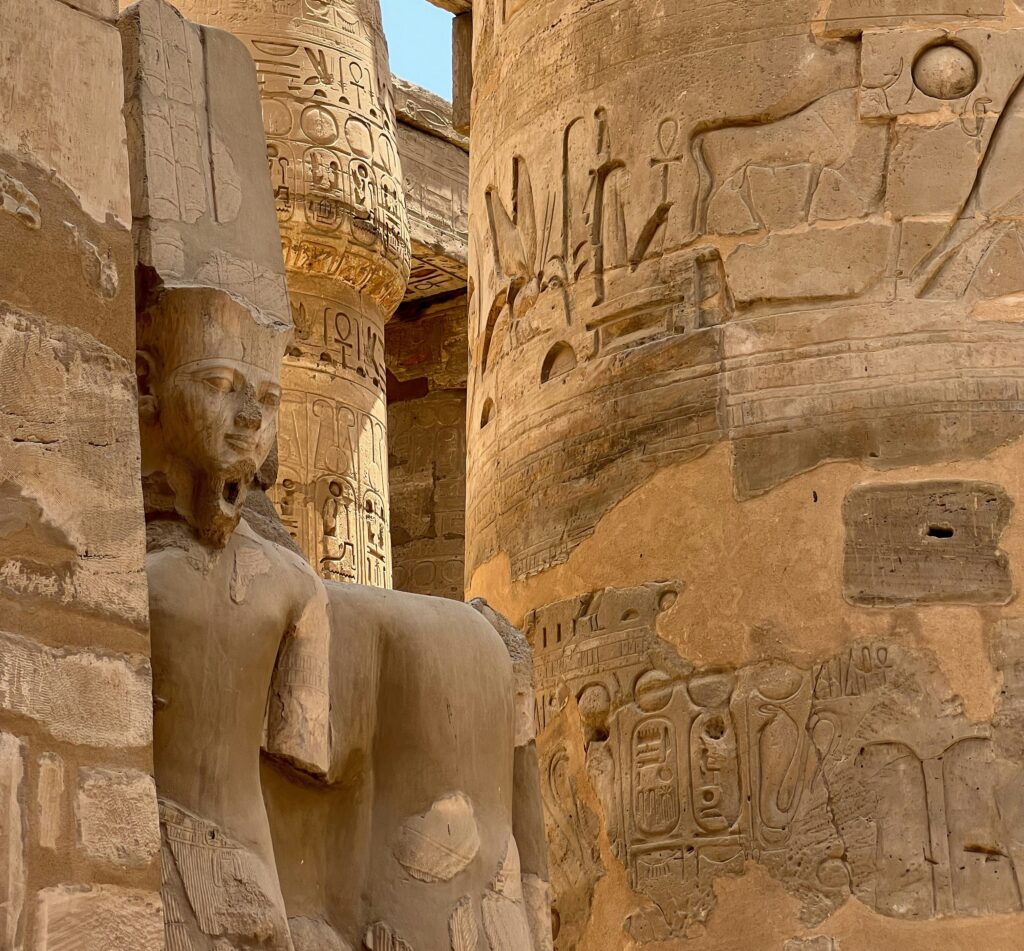Archaeologists have made a significant discovery at one of Egypt’s most iconic religious sites. A joint Egyptian-French excavation team recently uncovered a collection of ancient gold artifacts at the Karnak Temple Complex in Luxor. The find, which dates back to the 26th Dynasty (664–526 BCE), was stored inside a broken ceramic vessel and includes gold jewelry, amulets, and intricately crafted statuettes.
The excavation, focusing on the northwest sector of the vast temple complex, revealed a remarkable trove that has remained hidden for centuries. Among the most notable pieces is a statuette depicting the Theban Triad—Amun, the chief deity of the temple, alongside his consort Mut and their son Khonsu. The Temple of Amun, considered by some historians to be one of the largest religious structures ever built, served as a focal point of worship for millennia. Alongside the gold artifacts, the team also unearthed mudbrick buildings from the same period, believed to have functioned as workshops or storage areas linked to temple activities.
Mohamed Ismail Khaled, secretary-general of Egypt’s Supreme Council of Antiquities, emphasized the significance of the find, stating that it offers new insights into the temple’s development during the first millennium BCE. The discovery contributes to a deeper understanding of the Saite Period, Egypt’s final era of native rule before the Persian conquest.
Restoration and documentation efforts are already underway, with plans to eventually display the artifacts at the Luxor Museum. This latest discovery highlights the enduring mysteries of Karnak and reinforces its importance as a historical and archaeological treasure trove.
Source: archaeology.org

